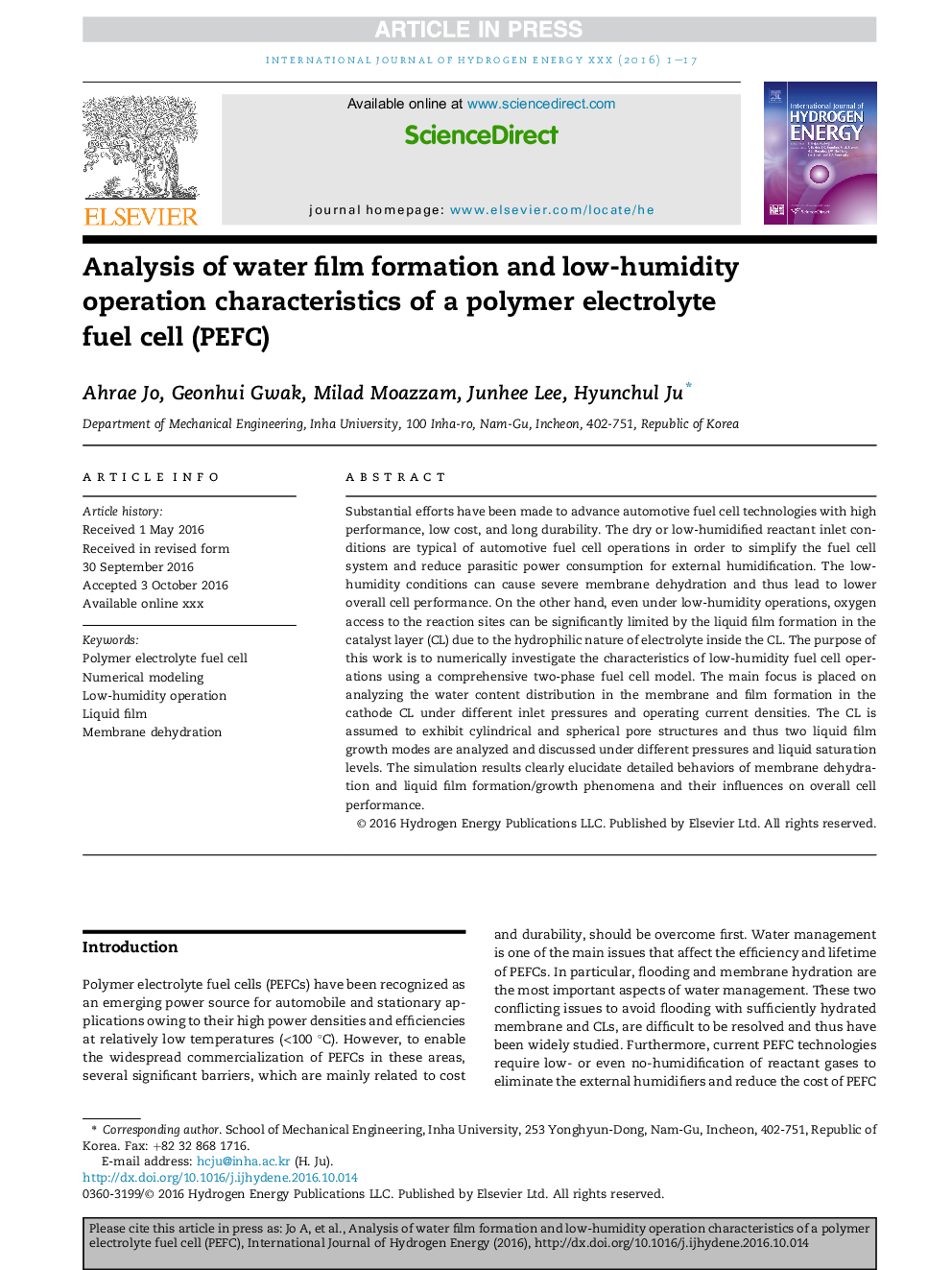| Article ID | Journal | Published Year | Pages | File Type |
|---|---|---|---|---|
| 5148465 | International Journal of Hydrogen Energy | 2017 | 17 Pages |
Abstract
Substantial efforts have been made to advance automotive fuel cell technologies with high performance, low cost, and long durability. The dry or low-humidified reactant inlet conditions are typical of automotive fuel cell operations in order to simplify the fuel cell system and reduce parasitic power consumption for external humidification. The low-humidity conditions can cause severe membrane dehydration and thus lead to lower overall cell performance. On the other hand, even under low-humidity operations, oxygen access to the reaction sites can be significantly limited by the liquid film formation in the catalyst layer (CL) due to the hydrophilic nature of electrolyte inside the CL. The purpose of this work is to numerically investigate the characteristics of low-humidity fuel cell operations using a comprehensive two-phase fuel cell model. The main focus is placed on analyzing the water content distribution in the membrane and film formation in the cathode CL under different inlet pressures and operating current densities. The CL is assumed to exhibit cylindrical and spherical pore structures and thus two liquid film growth modes are analyzed and discussed under different pressures and liquid saturation levels. The simulation results clearly elucidate detailed behaviors of membrane dehydration and liquid film formation/growth phenomena and their influences on overall cell performance.
Related Topics
Physical Sciences and Engineering
Chemistry
Electrochemistry
Authors
Ahrae Jo, Geonhui Gwak, Milad Moazzam, Junhee Lee, Hyunchul Ju,
